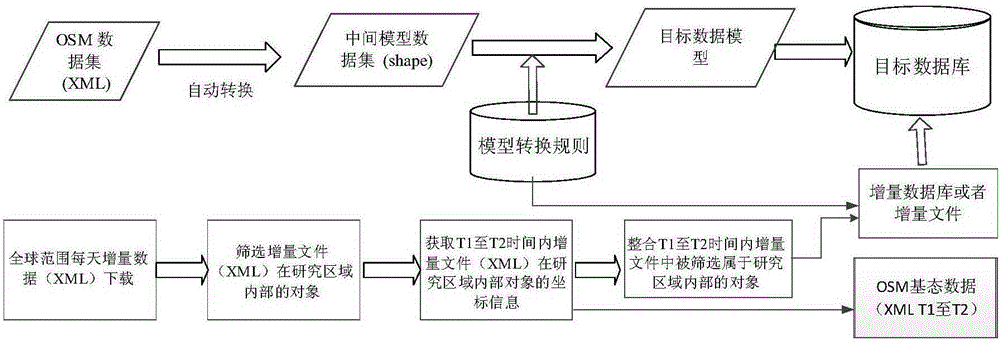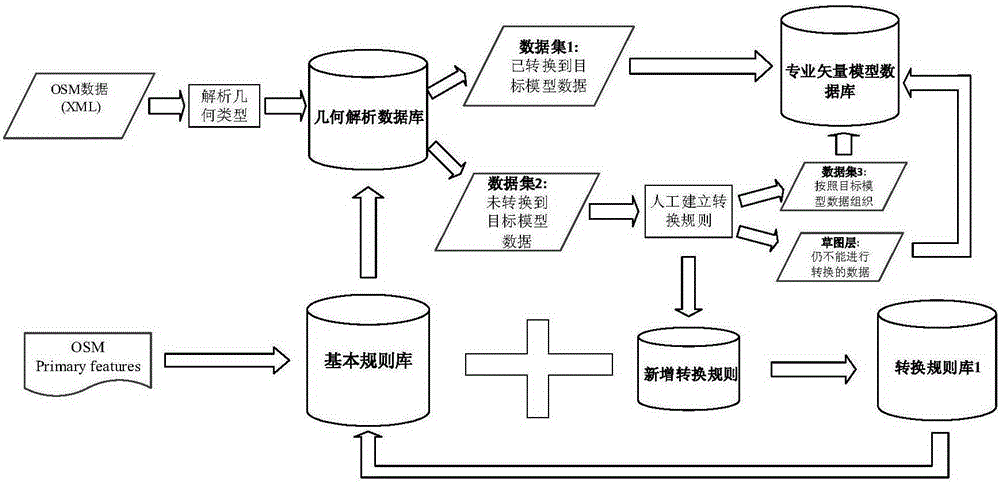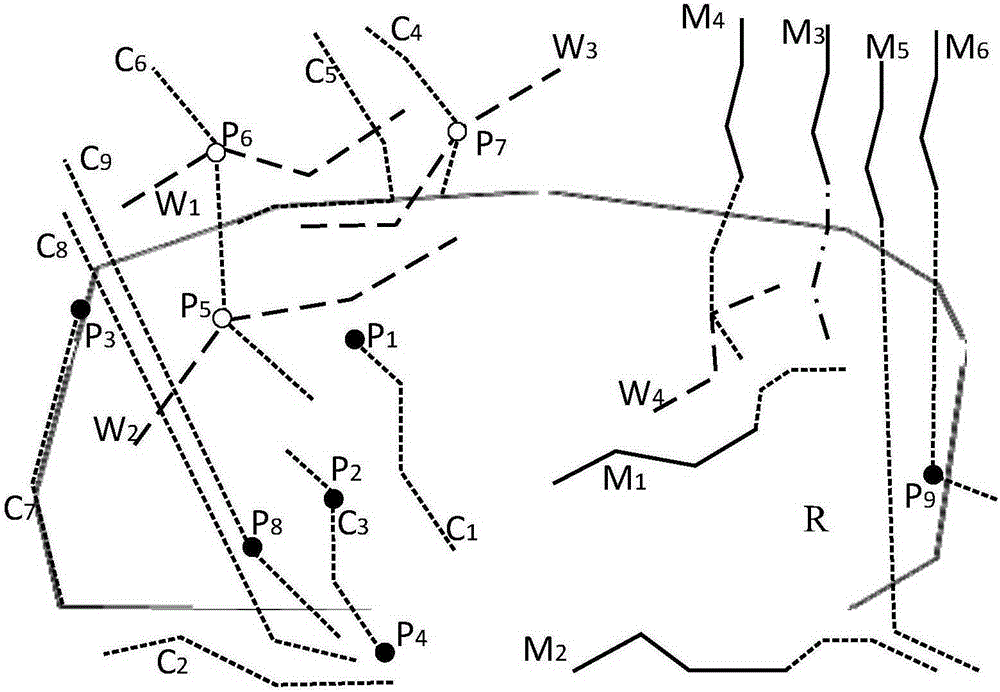Method for model automatic conversion from OSM (OpenStreetMap) data to professional GIS vector data and dynamic integration of OSM incremental data
A technology of vector data and incremental data, applied in digital data processing, structured data retrieval, geographic information database, etc., can solve problems such as high labor costs
- Summary
- Abstract
- Description
- Claims
- Application Information
AI Technical Summary
Problems solved by technology
Method used
Image
Examples
Embodiment 1
[0061] Example 1: Model conversion from OSM data to professional GIS data
[0062] The overall idea of model conversion from OSM data to professional GIS data is attached figure 2 shown. The model conversion from OSM data to professional GIS vector data includes two core tasks, that is, geometry type conversion and core attribute conversion. Geometric type conversion is about converting OSM vector data expressed by node, way, and relation into point, line, and area objects of professional GIS vector data; core attribute conversion is to use a rule-based method to convert points, lines, and areas from OSMXML format Assign the feature code of the target model, and determine the corresponding target layer according to the feature code.
[0063] Geometry type conversion is performed using the following four rules:
[0064] Let OSMGeoPrim represent the original OSM geometry type of the object, namely node, way, relation, and OSMtag.k and OSMtag.V represent the value of a pair...
Embodiment
[0081] Using VisualStudioC# language, object-oriented method, based on the OGC (OpenGIS Consortium) standard, the data layer, business logic layer and map display layer are logically and physically separated, and a dynamic integration system for overseas peripheral geographic information has been developed (the computer has been obtained) Software copyright, 2014SR217380), realizes OSM data storage, rule addition and deletion, data model conversion and other functions, and uses open source database PostgreSQL to manage data.
[0082] my country's 1:50,000 surrounding geographic information model is used as the conversion target model, which includes seven categories, including water system, residential areas and facilities, transportation, pipelines, boundaries and political areas, landforms and soil quality, and vegetation. Different categories are subdivided into different feature layers according to the geometric types of features, and each object has a different feature cod...
PUM
 Login to View More
Login to View More Abstract
Description
Claims
Application Information
 Login to View More
Login to View More - R&D
- Intellectual Property
- Life Sciences
- Materials
- Tech Scout
- Unparalleled Data Quality
- Higher Quality Content
- 60% Fewer Hallucinations
Browse by: Latest US Patents, China's latest patents, Technical Efficacy Thesaurus, Application Domain, Technology Topic, Popular Technical Reports.
© 2025 PatSnap. All rights reserved.Legal|Privacy policy|Modern Slavery Act Transparency Statement|Sitemap|About US| Contact US: help@patsnap.com



